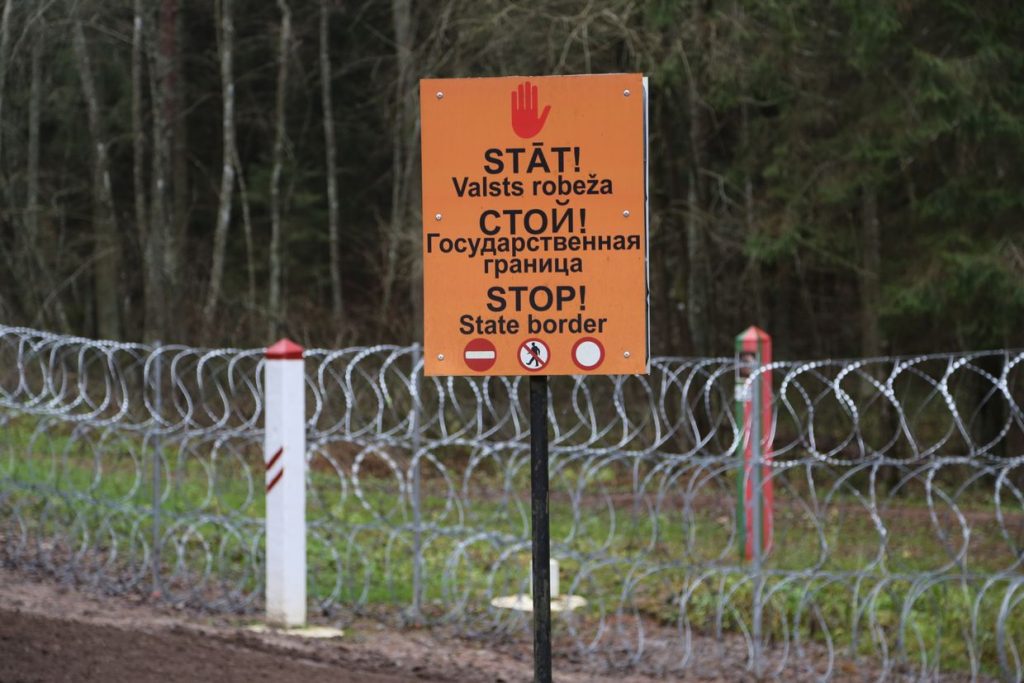The Latvian army has begun constructing an anti-tank ditch as part of its first defensive line near the border with Russia in response to concerns about potential Russian aggression. The Baltic states, known for their support of Ukraine and criticism of Russia, fear they could be the next target of Russian President Vladimir Putin’s threats. The defensive line being built near the Terekhovo border crossing in Ludza municipality includes strongholds, fortifications, obstacles, and ammunition depots to prevent vehicle movement, including tanks. Lieutenant Colonel Kaspars Lazdins highlighted the importance of these barriers in Latvia’s “anti-mobility plan” and emphasized their capacity to impede hostile forces.
Estonia, Latvia, and Lithuania have jointly agreed to fortify their eastern borders with Belarus and Russia through the construction of a Baltic defense line. The US Congress approved $228 million in military aid to these Baltic states earlier this year, demonstrating international support for their security efforts. In a related development, the American military battalion stationed in Lithuania will remain in the country indefinitely, as confirmed by Lithuanian Defense Minister Laurynas Kasciunas. Initially planned to stay until 2025, the battalion’s extended presence underscores the ongoing threat perception in the region and the need for sustained deterrence measures.
The defensive preparations in Latvia reflect a broader escalation of security measures across the Baltic region amid growing tensions with Russia. These measures are a response to the ongoing conflict in Ukraine, where Russian military intervention has led to a protracted war and intensified concerns about Moscow’s intentions in neighboring countries. By bolstering their defenses and receiving support from international allies like the United States, the Baltic states are signaling their commitment to deterring potential aggression and safeguarding their sovereignty.
The construction of the anti-tank ditch and other defensive fortifications in Latvia illustrates a proactive approach to national security and defense planning. By strategically positioning obstacles and creating barriers along vulnerable borders, the Latvian army aims to strengthen its ability to withstand potential incursions and protect its territory. The decision to prioritize defense infrastructure reflects a broader shift in military strategy towards deterrence and deterrence, underlining the importance of preparedness and readiness in the face of evolving security threats.
The cooperation between the Baltic states and their international allies, particularly the United States, highlights the interconnectedness of global security concerns and the importance of collective defense arrangements. By aligning their defense strategies and sharing resources, Estonia, Latvia, and Lithuania are enhancing their resilience and capacity to respond to shared security challenges. The continued presence of the US military battalion in Lithuania underscores the commitment of NATO allies to reinforcing deterrence measures in the region and upholding stability and security in the face of regional threats.
In conclusion, the construction of the anti-tank ditch in Latvia and the broader defense preparations in the Baltic region reflect a proactive and collaborative approach to enhancing security and deterring potential aggression. By fortifying their borders and strengthening their defenses, the Baltic states are sending a clear message of resolve and solidarity in the face of escalating security threats. International support, particularly from the United States, underscores the collective effort to uphold stability and safeguard the sovereignty of the Baltic states against external pressures. Through coordination and cooperation, Estonia, Latvia, and Lithuania are working to ensure their security and resilience in an increasingly uncertain geopolitical environment.


